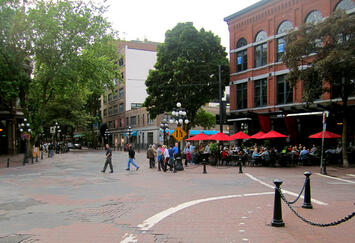
It seems that a day hardly goes by without another incident of violence making the national news. From school shootings to aggressive protests from extreme groups and endless petty crime in general, America’s mood toward feeling safe is not particularly good. Data from the Robert Wood Johnson Foundation and Harvard show that at the end of 2022, a quarter of American adults say they live in fear of being attacked in their neighborhoods.
Residents of America’s older, urban core-based cities like Philadelphia, Baltimore, and Chicago are in a particularly bad spot. Civil unrest has become common in Chicago’s Loop and homicides and violent crime is up in the City of Brotherly Love. Rampant drug use in the Tenderloin and surrounding neighborhoods in San Francisco has caused a retail exodus and shoplifting is commonplace. New York is dealing with seemingly endless hate crimes and random acts of violence on the streets, in the squares, and on mass transit. City-dwellers are scared for their safety.
It should be little wonder that surveys reveal that “only 15% of New Yorkers feel ‘very safe’” riding the subway during the day.” New Yorkers do not like being harassed at cafes and restaurants and parents are no longer comfortable bringing their children into the libraries that dot the landscape. It is unsurprising, then, that 94 percent of New Yorkers do not think enough is being done to address homelessness and mental illness. In the same poll, 57 percent of New Yorkers report that not enough is being done to address shoplifting, and three-quarters (74 percent) of transit riders say safety has become far worse since the start of the pandemic.
Worries about safety and security as a matter of public policy are not new. There are, and have been, endless debates about how to manage issues of safety from gun control measures to policing and mental health outreach. As the COVID-19 pandemic winds down, safety and security issues are front and center in discussions about how to renew and revitalize urban cores. Not mentioned, however, in these discussions of urban decline is this: critical spaces of social mixing and engagement are under dire threat. If concerns of safety are not addressed and, if public, shared spaces continue to decline, the critically important social and communal fabric of our cities is at risk.
Central business districts in cities have traditionally been places where Americans meet, mingle, and encounter others with different outlooks and backgrounds; they are the common thread that keeps our cities, connections, and relationships together. The spatial and physical elements of communal life in cities – think amenities like parks, libraries, playgrounds, cafes, community centers, and mass transit—have huge impacts on propinquity and on creating and sustaining conditions to meet, socialize and create communal social capital.
Research has repeatedly demonstrated that Americans who live in closer proximity to these spaces and regularly take advantage of community amenities and third places like parks, libraries, restaurants, and theaters are appreciably more content with their neighborhood, more trusting of others, less lonely, and more engaged with their neighbor. Residents in amenity-rich neighborhoods with third places are more likely to say their community is an excellent place to live, feel safer walking around their neighborhood at night, and report greater interest in neighborhood goings-on. It is also the case that having vibrant public squares and common shared focal points result in Americans being more likely to help neighbors when asked along with being more trusting of others and more optimistic about the future.
Read the rest of this piece at AEI.
Samuel J. Abrams is a profesor of politics at Sarah Lawrence College and a nonresident senior fellow at the American Enterprise Institute.
Photo: La Citta Vita via Flickr under CC 2.0 License.












